Nobody cleans up natural habitats. Animals poop, shed their skins, and eventually die, leaving their lifeless corpses behind.
But these biological materials don’t stick around forever. Eventually, these materials are used by other organisms, forming an endless cycle. This is what happens when things decompose or biodegrade.
Some keepers have begun trying to recreate these cycles in the habitats they maintain. This isn’t always easy to do, and it isn’t appropriate for all species and situations. But, if you are willing to do a bit of homework and be endure some trial and error, you should be able to create a bioactive vivarium.
Personally, I’ve maintained habitats that were at both ends of the spectrum. I’ve typically used “sterile” substrates for my breeding programs, but I’ve also maintained a number of bioactive vivaria for educational displays. I’ll try to share some of the lessons I’ve learned along the way.
What Is a Bioactive Vivarium?
Bioactive vivaria are typically (but not always) natural-looking habitats, with plenty of plants and habitat-appropriate substrates. But the “bioactive” moniker refers specifically to the substrate – bioactive substrates are “alive.” They foster an entire ecosystem of fungi, bacteria, and small animals.
These organisms breakdown wastes and dead organic matter in the vivarium. This prevents the buildup of biological materials and helps to free the nutrients they contain. The vivarium’s plants will then harvest and use these nutrients, helping them to remain vigorous and healthy.
If designed and executed well, bioactive substrates can eliminate the need for keepers to remove feces and other materials – they’ll simply biodegrade.
It isn’t easy to create a completely balanced, bioactive substrate that processes waste in a timely manner. But even a partially balanced bioactive substrate that partially breaks down wastes and organic debris is very helpful and often worth pursuing.
How Do You Make a Bioactive Substrate?
In a nutshell, keepers make bioactive substrates by combining a good selection of materials and then providing the right environmental conditions to allow the organisms present to survive. It is also important to maintain the substrate properly, so that it will continue to thrive, once established.
We’ll explain some of these principles below so that you can make your own bioactive substrate. Just note that most keepers will find that continued experimentation is necessary for success.
You can try to establish a bioactive substrate for just about any species, but it is best suited for small herps that live in forested habitats. Small animals produce smaller quantities of feces, and they can also thrive in smaller enclosures. Both of these characteristics are helpful for keepers trying to set up a bioactive substrate.
Nevertheless, we’re going to explain the best way to establish a bioactive substrate for several popular pet species (who may or may not meet the previously mentioned criteria) below.
Bioactive Vivarium Kit Checklist
Every bioactive vivarium is different, so “recipes” are difficult to develop. That said, the vast majority of bioactive vivaria will utilize the same three basic materials:
- Drainage Layer – Drainage layers are usually made from things like river rock, gravel, or clay pellets. Some keepers even use plastic grate materials. But no matter what you use, the purpose of the drainage layer is the same: It provides a space at the bottom of the vivaria for water to drain. Drainage layers aren’t always necessary, but they’ll usually help to prevent your substrate from becoming water-logged.
- Bulk Substrate – Most bioactive substrates will contain a thick layer of some type of bulk substrate. The material used will vary based on the species kept and the keeper’s goals. However, some of the best options include coconut husk, cypress mulch, orchid bark, and soil. Sometimes, keepers will make a custom blend, comprised of some type of bark or soil and a little sand or decomposed granite.
- Leaf Litter – Leaf litter is often added on top of a bulk substrate. The litter helps to address several important issues. For starters, it provides a good habitat for the microorganisms and small animals used to break down wastes. But it also serves as a food source for some of the decomposers too. It is typically advisable to collect an assortment of leaves in various stages of decomposition. Some should be freshly fallen and essentially intact, while you’ll also want leaves that are almost completely broken down, as well as plenty of leaves that are at intermediate stages of
decomposition.
You may also want to harvest a small amount of forest soil and add it to the substrate you make.
Bioactive Terrarium Bugs: The Cleaning Crew
After adding the three basic layers of substrate to your vivarium, you’ll need to add some of the insects and other invertebrates necessary to create a functioning ecosystem.
With luck, you’ll end up inadvertently adding some of these critters to your vivarium when you collect decaying logs and soil from a healthy forest. However, it is typically necessary to deliberately collect some of the most important organisms and introduce them to the habitat.
Some of the most important bugs you’ll want to collect and add to the vivarium include:
- Earthworms (several species)
- Isopods (AKA “roly-polies” or “pill bugs”)
- Millipedes
- Springtails
- Beetles
You can purchase some of these critters online, but it usually isn’t difficult to find them in natural habitats near you. Note that crickets can also be helpful in bioactive vivaria, but you’ll want to be sure they have plenty to eat, as hungry crickets may attack small lizards, snakes, or frogs.
If your pet is likely to eat some of these creatures, you’ll want to be sure to provide plenty of hiding spaces. You may also have to add replacement bugs over time to maintain a viable population.
Specific Examples: Bioactive Vivaria for Various Species
Now that we’ve established the basic components for a bioactive vivarium, it is time to look at specific examples. We’ll talk about some of the most important things to do when making bioactive substrates for various reptile species below.
A Bioactive Bearded Dragon Vivarium
Because bearded dragons are native to relatively arid habitats, it can be challenging to establish a bioactive substrate for them. Additionally, bearded dragons are large lizards, who require very large habitats. This means that you’ll need to provide your pet with a truly gigantic habitat in order to achieve a functioning bioactive substrate.
It is also important to remember that bearded dragons consume a lot of food and produce a lot of waste. Accordingly, it’ll often be necessary to remove some of your pet’s waste until you develop a fully functioning ecosystem.
Bioactive Tips for Bearded Dragons:
- Because bearded dragon habitats are typically somewhat dry, you usually don’t need to add a drainage layer.
- A 50-50 mix of forest soil or coconut husk and sand is a good starting point for the bulk substrate. Just adjust the mixture as necessary.
- Leaf litter will be helpful for providing hiding places and habitat for your decomposing bugs.
- Use caution adding millipedes to the enclosure, as most are toxic, and your lizard may try to eat them.
- Because worms will be hard to maintain in a dry habitat, you may find that a healthy beetle population is necessary.
> Further Reading: How to Make a Desert Terrarium » A Step-By-Step Guide
A Bioactive Leopard Gecko Vivarium
Leopard geckos are relatively small lizards, which makes them well-suited for bioactive vivaria. Additionally, they require much less food and produce much less waste than bearded dragons do. They usually eat their shed skins too, which means the vivaria’s insects won’t have to do as much heavy lifting.
Another interesting thing about leopard geckos that makes them well-suited for bioactive substrates is their tendency to defecate in one place. This will help provide the invertebrates in the terrarium with a reliable food source, and it’ll help keep the rest of the habitat clean.
Bioactive Tips for Leopard Geckos:
- Leopard geckos are small lizards, who can be maintained in relatively small habitats. However, if you wish to establish a bioactive substrate, you should provide them with the largest habitat possible. Something in the 40-gallon (3 to 5 square feet) is ideal.
- As with bearded dragons, you’ll want to use caution adding millipedes to your leopard gecko’s enclosure.
- A drainage layer will likely be helpful for your leopard gecko habitat, but it doesn’t need to be very deep.
- Avoid the common problem of keeping leopard geckos in habitats that are too dry. This will not only help prevent your lizard from having difficult sheds, but it’ll also help keep the decomposing invertebrates comfortable.
- A thick layer of leaf litter will be very beneficial for establishing bioactive substrates in a leopard gecko enclosure.
A Bioactive Crested Gecko Vivarium
Of all the commonly kept lizards, crested geckos are certainly one of the ones that are best suited for bioactive vivaria. They’re not only small lizards who need relatively little food, but they also thrive in humid habitats (it is often easier to establish a bioactive substrate in slightly damp substrates).
Additionally, crested geckos are largely arboreal. This means that they aren’t as sensitive to substrate changes as some other lizards are. This, in turn, means that you can focus on keeping the substrate ideal for the decomposing
invertebrates in the enclosure.
However, their arboreal nature also creates a challenge: Crested geckos often defecate on the elevated perches and the terrarium glass, rather than the substrate. But, a well-aimed blast from a spray bottle will often do the trick and help keep the enclosure glass cleaner.
Bioactive Tips for Crested Geckos:
- Use a thick drainage layer to ensure the substrate doesn’t become waterlogged.
- Some members of the “cleanup crew” will climb branches or slabs of cork bark. Accordingly, you may be able to leave feces deposited in these areas attached, rather than removing it as you would feces stuck to the glass.
- As with the other lizards we’ve discussed, crested geckos may try to consume millipedes. However, they’re probably less likely to do so than bearded dragons or leopard geckos.
- Note that the insects in the substrate may also feed on the commercial fruit diet you provide to your gecko. This isn’t a big problem, but you’ll want them to focus on eating feces and other types of waste. Accordingly, you may want to provide fruit pastes to your pet in an elevated location.
- A coconut husk and orchid bark mix will serve as a great bulk substrate for crested geckos.
> Further Reading: How to Build a Rainforest Terrarium » A Step by Step Guide
A Bioactive Ball Python Vivarium
It is often challenging to establish bioactive substrates for snakes. The primary reason it is difficult to do so is that snakes produce large quantities of waste at infrequent intervals.
This means that it is often necessary to break up your snake’s waste and mix it in with the substrate (not too deep – you still want air to get to it). Given enough time and a fully functioning ecosystem of decomposers, you’ll notice that the waste does get broken down. But the point remains: Bioactive substrates can be challenging to establish for snakes.
Another challenge – this one specific to ball pythons – is that this species cannot be maintained in overly humid enclosures. Ball pythons tolerate moderate humidity levels perfectly well, but if you add too much water to the enclosure, they can develop skin and respiratory infections.
Bioactive Tips for Ball Pythons:
- A thick drainage layer will be very helpful for maintaining proper substrate moisture, without causing the entire habitat to become damp.
- Don’t be afraid to experiment with varying levels of substrate dampness. For example, you may want to keep some portions of the substrate relatively damp, while leaving other portions relatively dry. However, this may mean that you need to collect any feces deposited in dry areas and mix it into the substrate in damp areas.
- It will be extremely difficult to establish a bioactive substrate in a small ball python enclosure, so be sure to pick out a large enclosure when getting started.
- A thick layer of leaf litter will not only help to keep your “cleanup crew” healthy, but it’ll also provide additional hiding opportunities for your snake.
- An ideal substrate would be primarily comprised of cypress mulch and coconut husk.
A Bioactive Corn Snake Vivarium
Like most snakes, corn snakes also present challenges for those who want to create a bioactive substrate. However, with a sufficiently large enclosure and a willingness to experiment, you can achieve success.
Corn snakes inhabit a variety of different habitats in the wild, but many prefer to live in forests. This means that they’ll often adapt to moderately high humidity levels, although they can suffer skin and respiratory infections if kept in perpetually damp conditions. So, use care when adding water to the habitat.
Bioactive Tips for Corn Snakes:
- Corn snakes often defecate while climbing, which sets up an interesting possibility: If you arrange the climbing branches above the dampest (and most bug-rich) areas of the substrate, you may be able to avoid having to move feces around the habitat.
- A thick layer of leaf litter will prove very helpful when setting up bioactive substrates in corn snake enclosures. It’ll also provide additional hiding opportunities for your snake. You can include some pine straw for aesthetic purposes (corn snakes often inhabit pine forests), but you’ll need broad leaves to feed the worms, bacteria, and fungi.
- A drainage layer will be helpful when setting up your corn snake’s bioactive substrate. Rocks will work well, but very coarse sand is another intriguing option.
- Corn snakes will adapt to most substrates well but be sure that you don’t keep the substrate too damp, as this may cause health problems. A mixture of cypress mulch and coconut husk is likely the best choice.
Bioactive Vivariums: Give Them a Try!
We hope that you’ve found this article about bioactive vivaria interesting and that it has encouraged you to think about creating your own bioactive vivaria. Just remember to keep your pet’s best interest in mind as you embark on the journey. It is also wise to discuss your plans with more experienced keepers. This may help you avoid mistakes you’d otherwise make.
I’ve always found bioactive vivaria fun to construct. But they are also challenging, so you’ll need to be willing to adapt and adjust your approach as you go. If you do this and continue to experiment when necessary, you’ll usually have some degree of success.
If you’ve enjoyed this article, please share it with your friends. Also, be sure to share any questions or comments you have below!
Photo by courtesy of The Bio Dude

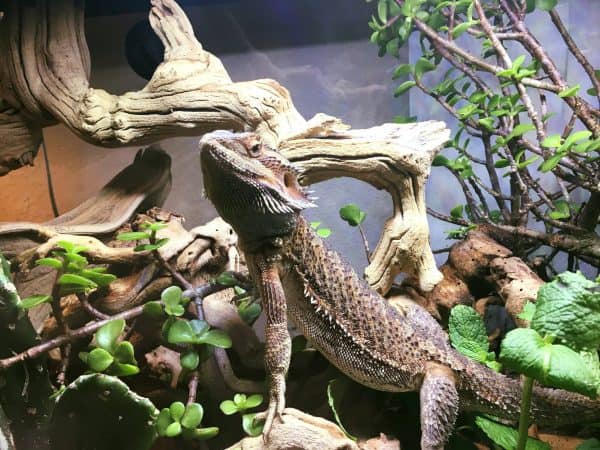
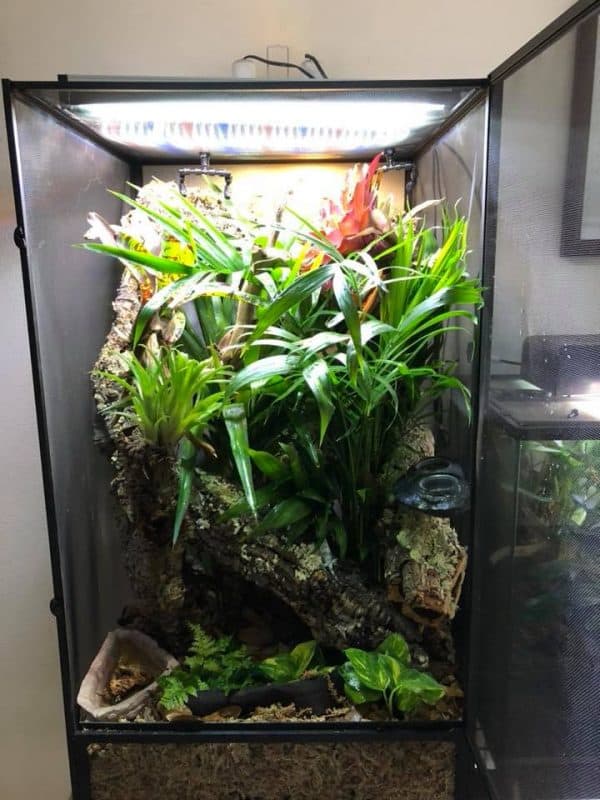
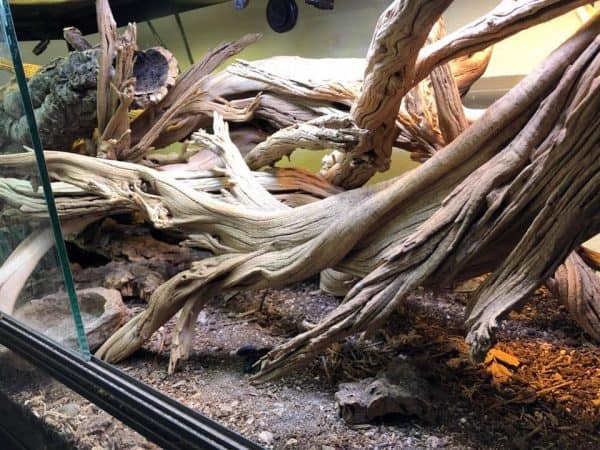
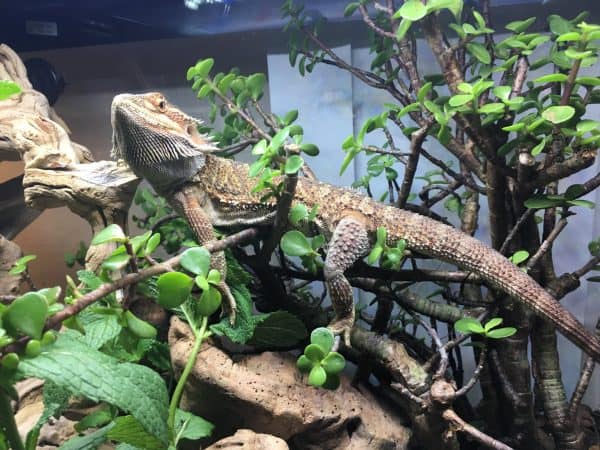
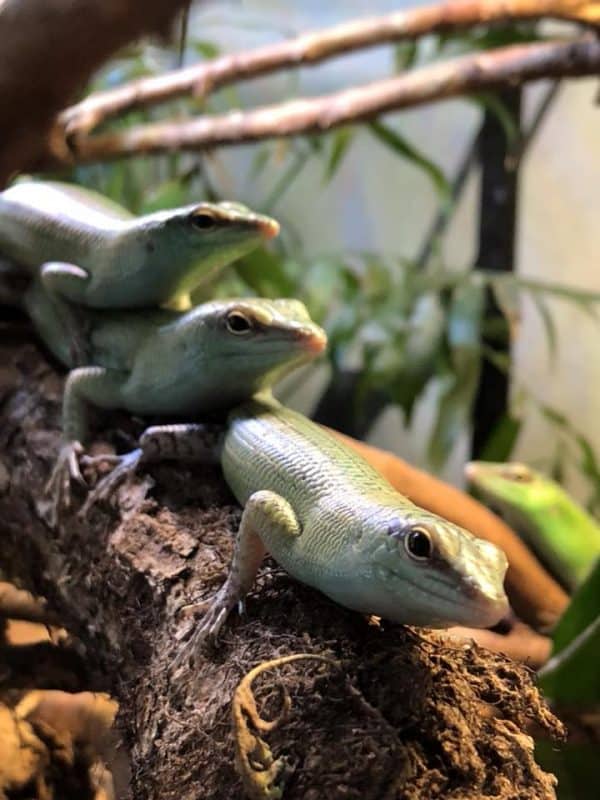
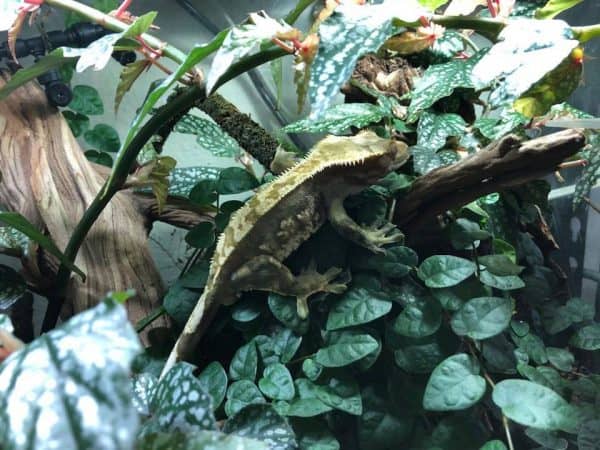
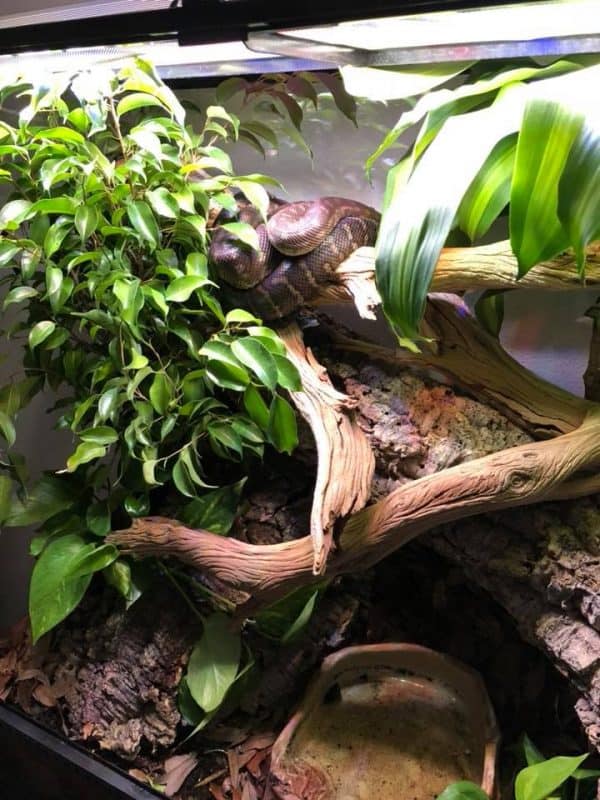
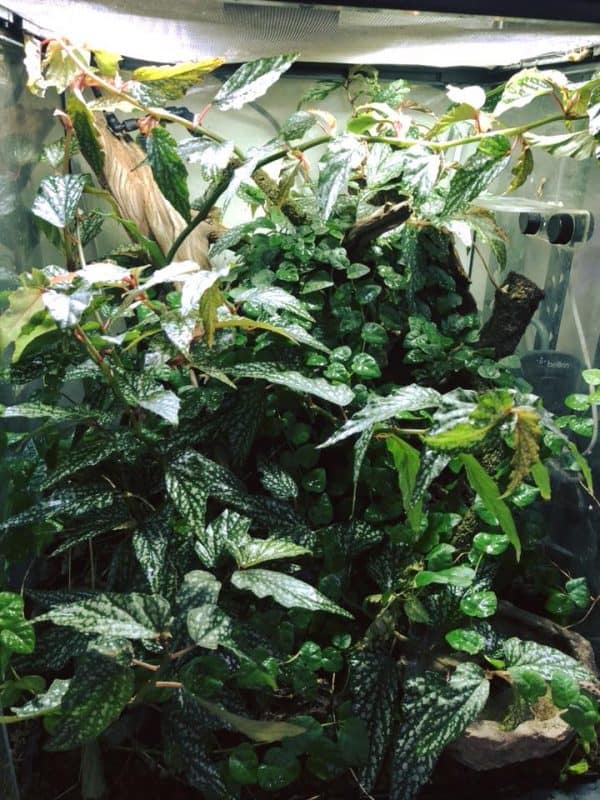
10 Comments
Very informative and well written. I am just starting to research a bioactive vivarium for my ball python, so there’s lots more to read. You, however, brought up a point that I have not read about yet, the issue of snakes not producing enough waste to maintain the microfauna populations. Thank you for that. Aside from breaking up the waste and incorporating it into the substrate, what could be added to the substrate to ensure there’s enough for the insects, etc. ?
Hi Peter,
Here are a few things you can do to boost the nutrients in your vivarium.
Dried leaves (like oak or maple) are a great addition as they break down slowly and provide food. Worm castings add beneficial bacteria and nutrients.
You can also use specialized isopod/springtail food, or sprinkle tiny amounts of “Repashy” Bug Burger or fish flakes occasionally.
Just remember, use supplements sparingly to avoid overloading the system!
Let me know if you have any other questions as you start building your vivarium. It’s an exciting process!
Thank you for this article it was very helpful. I am hoping to make my Nelson’s milksnake tank bioactive, would you recommend following the details outlined for the corn snake? Thank you!
Hi Madelyn,
I’m glad you found the article helpful! Nelson’s milksnakes have care requirements that are similar to corn snakes in many respects. When it comes to setting up a bioactive enclosure, the principles used for corn snakes can generally be applied to Nelson’s milksnakes. This includes using a well-draining substrate, providing live plants that can tolerate the conditions of a snake enclosure, and introducing cleanup crews like isopods and springtails.
However, always ensure that the specific temperature, humidity, and hiding needs of the Nelson’s milksnake are met. It’s also a good idea to monitor the snake closely after transitioning to a bioactive setup to ensure it’s adjusting well. If you’re ever uncertain, consulting with a reptile specialist or veterinarian can provide additional guidance tailored to your specific situation.
Best of luck with your bioactive setup!
hi loved the article and I will be doing some homework on long toed salamanders to set up an enclosure for my wild caught one thankfully it is doing well and eats well to. but it is wild caught so I am going to try and make a habitat for it that is as natural as possible! It is from Oregon do you have any ideas on what I could use for its setup?
Hi Aurora,
Of course we never recommend keeping wild caught animals, however, I would recommend unfertilised soil as a substrate, topped with sphagnum moss, provide cork bark as hiding places, small sandblasted branches for your salamander to climb on and a low water bowl with steps/ledges to get in and out.
I found your article very interesting and informative as was wondering if a bio active Vivaria would be beneficial to a Chinese water dragon and if you had any info on the subject or could point me in the right direction
Hey, Kane.
Thanks for the kind words!
You probably could use a bioactive substrate with a Chinese water dragon, but I’m not sure how successful you’ll be. CWDs get pretty big and produce a not-insignificant amount of waste, which will likely exceed the capabilities of the resident bacteria and fungi to breakdown. Accordingly, you’ll still likely find it necessary to clean the habitat frequently.
But there’s no harm in trying! Let us know how it goes!
Hi just stumbled upon this very informative article. I recently adopted a corn snake and was told about a bio active terrarium. I currently have the clay balls, was told to put a wire mesh over that which I did. I then mixed coconut husk and a forest floor mixture. I added 40 isopods and several small plants. Do you have any suggestions for what type of plants I should add? I was told any and all house plants are fine, but I’m hoping to add some color to his terrarium. Very interested in adding earth worms and beetles as well to his habitat.
Hello Nate!
Great to hear that you are looking into making your corn snake’s terrarium as natural and healthy as possible. Adding plants can definitely add some more life and color to it. Some common house plants that would be suitable for a bio active terrarium include spider plants, jade plants, pothos, bromeliad, orchids, snake plants, dwarf schefflera, peperomia, and African violets.
In addition, you can also add earthworms, which will help to keep the terrarium balanced. It is important that you ensure that any plants, bugs, or other creatures are safe for your corn snake and properly cleaned before introduction into the habitat. You should also be sure to use a soil with optimal moisture levels for the plants and provide enough heat and light for them to thrive.
I hope this has been helpful in guiding you toward a more diverse, vibrant terrarium for your corn snake! Best of luck on your reptile-keeping journey.